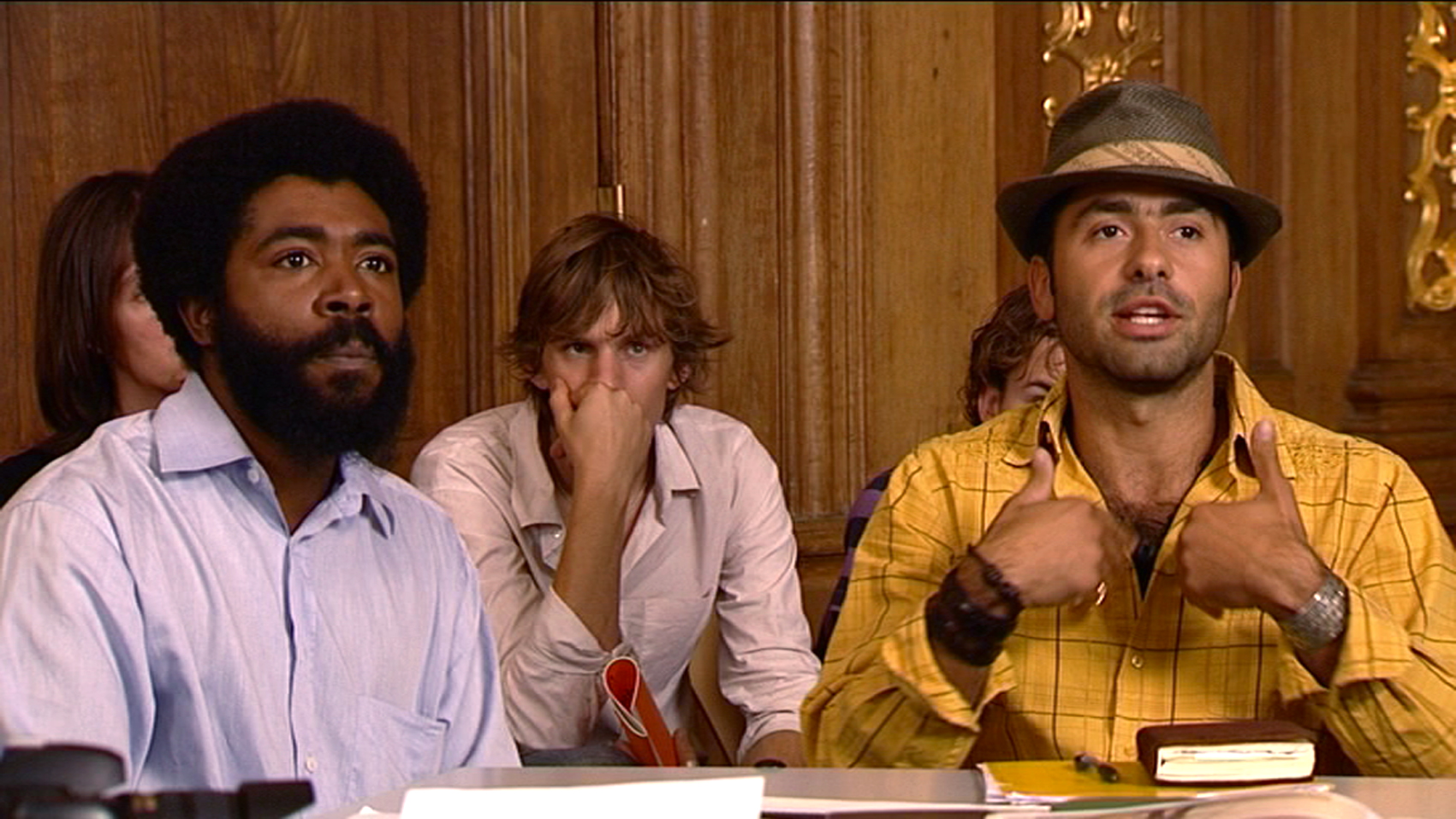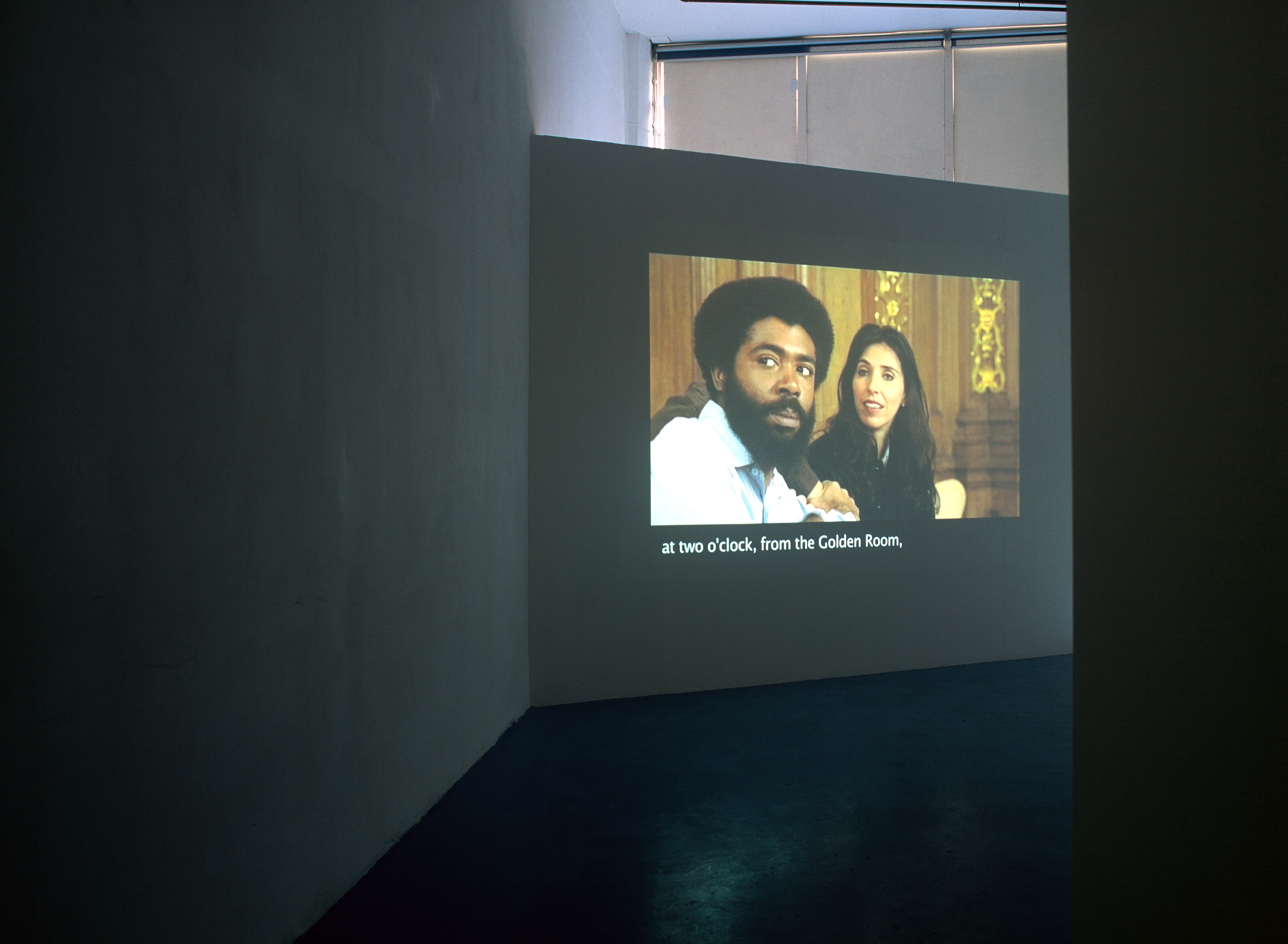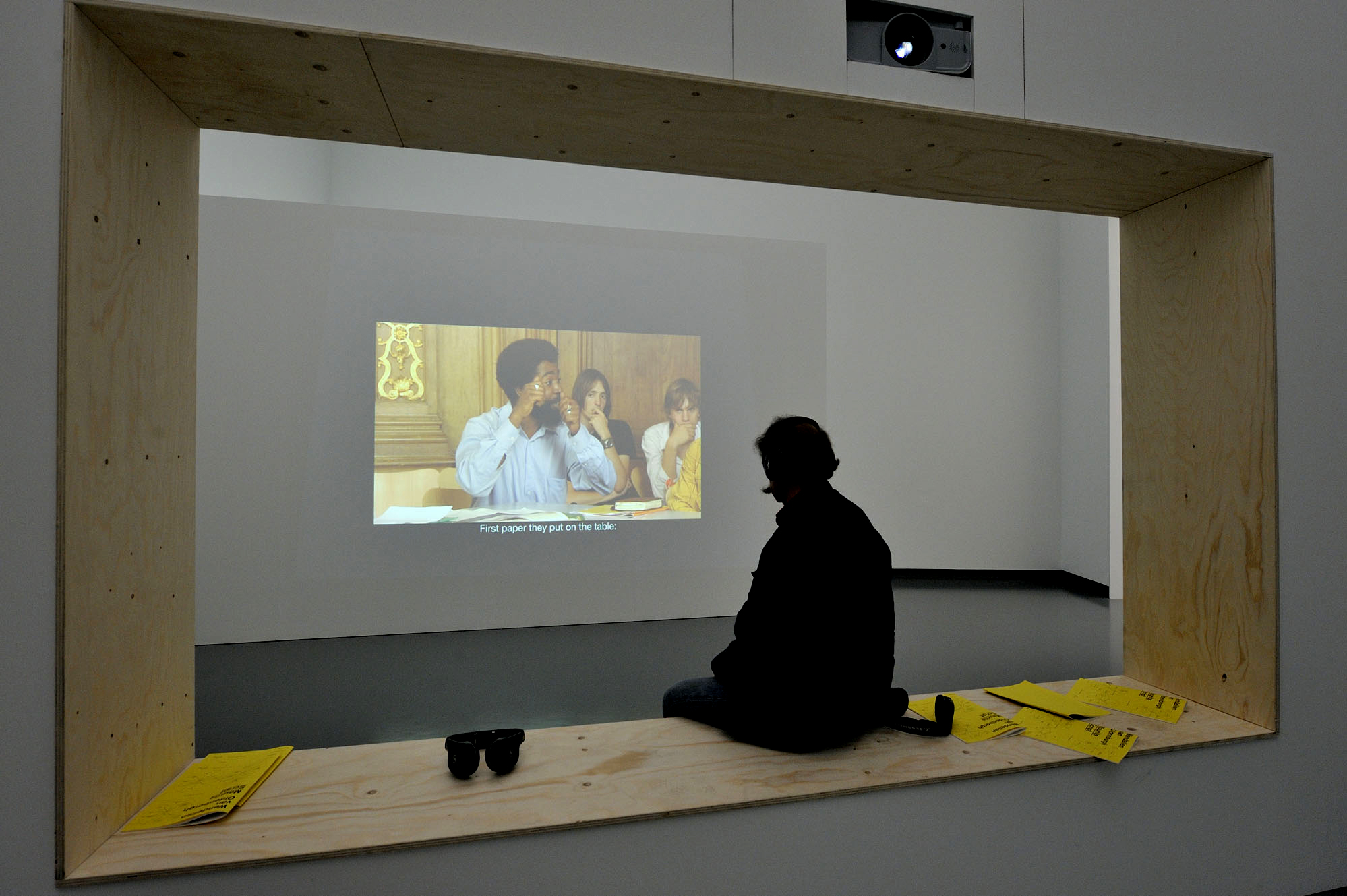Maurits Script [2006]
two-channel video installation, colour, sound
architectural setting and booklet
26 min. and 38 min.
with
Anthony Clarke
Romeo K. Gambier
Charl Landvreugd
Eunice Landvreugd
Cristiane de Morais Smith
Peter Olsthoorn
Nienke Terpsma
Alexander Vollebregt
camera
Joris Kerbosch
Sal Kroonenberg
sound
Martijn van Haalen
filmed on location
Museum Het Mauritshuis,
The Hague
comissioned by
Emily Pethick for Casco
– Office for Art, Design
and Theory, Utrecht ︎
click here to download the booklet of Maurits Script as PDF ︎
two-channel video installation, colour, sound
architectural setting and booklet
26 min. and 38 min.
with
Anthony Clarke
Romeo K. Gambier
Charl Landvreugd
Eunice Landvreugd
Cristiane de Morais Smith
Peter Olsthoorn
Nienke Terpsma
Alexander Vollebregt
camera
Joris Kerbosch
Sal Kroonenberg
sound
Martijn van Haalen
filmed on location
Museum Het Mauritshuis,
The Hague
comissioned by
Emily Pethick for Casco
– Office for Art, Design
and Theory, Utrecht ︎
click here to download the booklet of Maurits Script as PDF ︎
Strategies of feedback and contagion fed into the development of the third stage of A Certain Brazilianness (A C_B__), the two-channel film Maurits Script (2006). The film takes the Dutch colonial past in northeast Brazil as a starting point, a history that is frequently overlooked in the Netherlands. Van Oldenborgh constructed a script around the figure of Johan Maurits van Nassau, the Dutch governor in Brazil from 1637 to 1644, who is highly regarded by the Dutch as an early humanist ruler. Compiled from sources ranging from personal letters to political council minutes, the resulting script paints a complex portrait of the conflicts of the time, includ- ing tensions between Portuguese and Dutch colonisers, and the less recognised aspects of Maurits’s governance, such as his treatment of slaves and the indigenous population. As Van Oldenborgh would later describe, ‘The reading of the historical words opens up a space for other voices, the voices that perhaps did not write history.’ Filming at a one-day public event in the opulent Golden Room of the Mauritshuis museum (Maurits’s former residence in The Hague), Van Oldenborgh cast a group of participants, each of whom has a different personal relationship to the issues raised in the script. On one side of the room the actors individually read their lines before a single, unmoving camera, while on the other side the remaining actors engage in an ongoing conversation around a table. In the discussion they address the legacies of colonial histories within contemporary Dutch society, in particular in relation to citizenship and multiculturalism, at times revealing conflicting viewpoints. Throughout the day the conversation takes on a momentum of its own, spreading to involve the camera crew and the audience. As Van Oldenborgh reflects:
The audience becomes part of the performance, and the performers, view- ers and listeners as well as actors. Their willingness and interest to engage in reading the given roles and in the act of conversation [gives] life and directness to the event. They play with their awareness of the camera, the audience and the passersby. The point is not to direct the situation, but to direct oneself within it – a process that can be induced, but not controlled.
Emily Pethick in the publication Amateur ︎




Stills


Installation view of Cinema Olanda: Platform, Witte de With Rotterdam, 2017. Photographs by Kristien Daem


Installation view of Maurits Script, solo presentation at Casco Utrecht, 2006


Installation view of Play van Abbe, van Abbemuseum Eindhoven, 2007. Photographs by Peter Cox